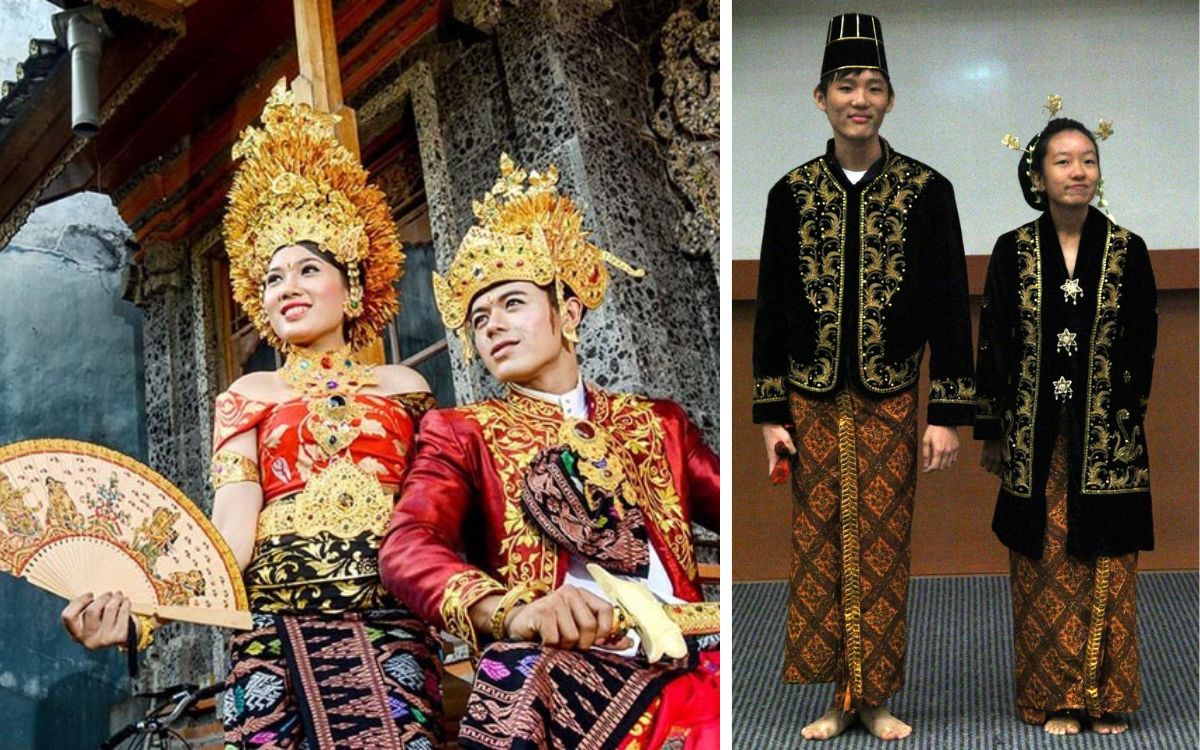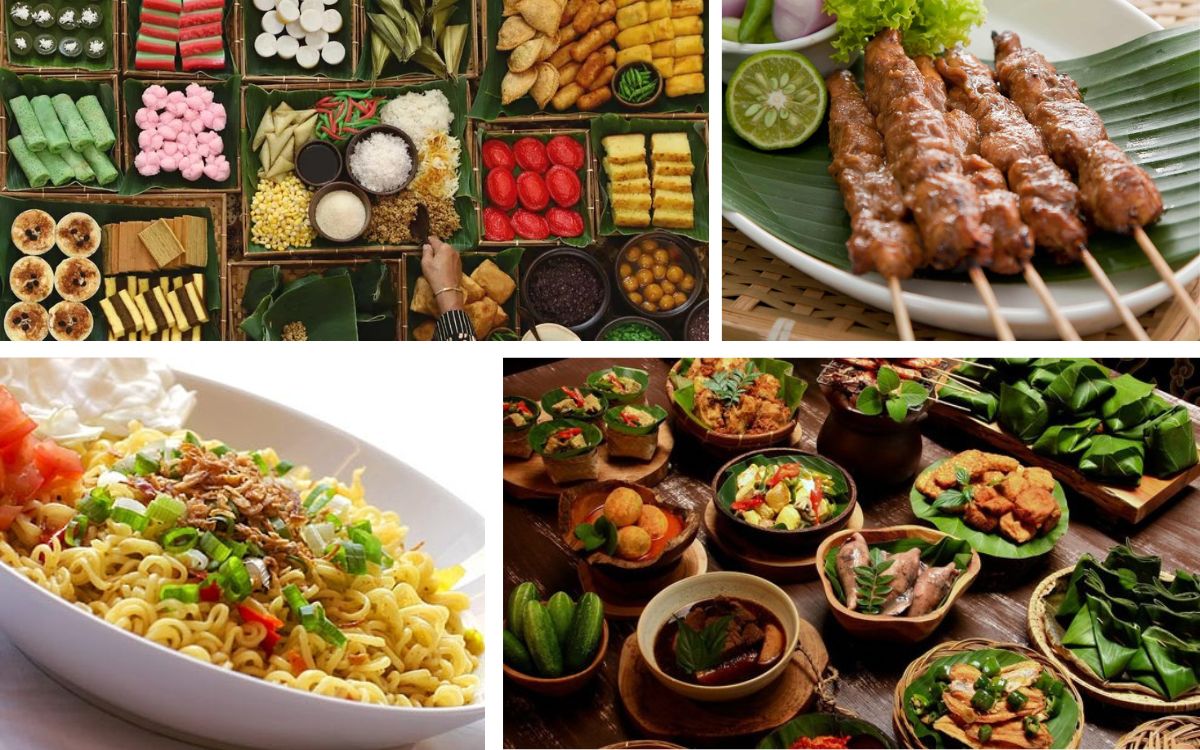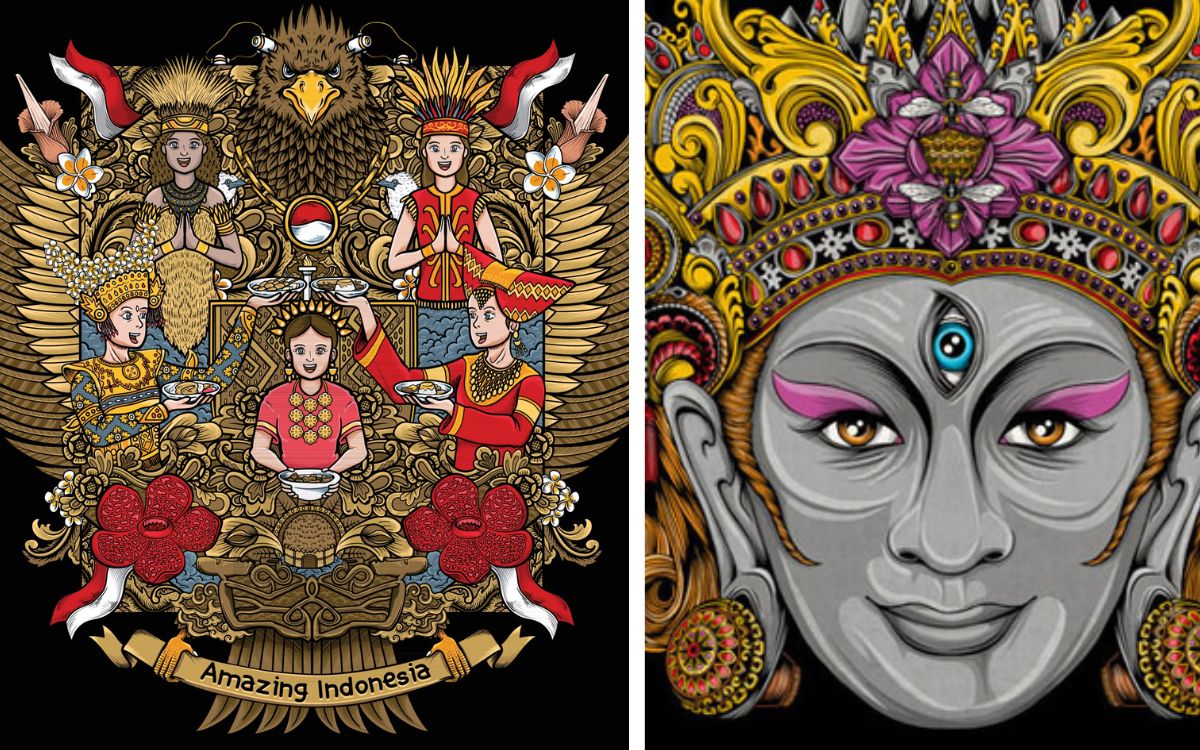The culture of Indonesia is varied, with its melting pot of colonial and immigrant influences as
well as its indigenous traditions, from the Portuguese traders to the Dutch colonialists to
Chinese, Indian and Malay settlers. Most people in Indonesia define themselves by their local
culture, rather than their national culture.This island state has been a major hub for trading
since ancient times, as it is centrally located among history’s superpowers, which is why you
can expect to witness all the world’s major religions living harmoniously side by side.
Indonesian culture is focused around the community, with a hierarchical structure. Indonesians
believe in the concept of gotong royong (mutual assistance) and mufakat (consensus), and the
national motto is Bhinneka Tunggal Ika (Unity in diversity). Jam Karet (rubber time) highlights
the cultural attitude: that life should not be rushed – everything has its time and place.
If you are given a gift, it is expected that you verbally refuse it before taking it, as a means
of politeness. If you wish to give gifts to new friends you meet during your private tour of
Indonesia with us, try to wrap the present in gold and red paper, and always give from the right
hand.
Avoid sharp items (which can indicate that you wish to sever the friendship), alcohol (as it is
often prohibited in Islam), non-Halal foodstuffs, or leather (as it is often prohibited in
Hinduism). Note that gifts are never opened in front of the gift bearer.

Indonesia Clothing
Indonesian clothing is a vibrant tapestry of textiles, colors, and styles, reflecting the
country's rich cultural heritage Indonesian clothing is a vibrant tapestry of textiles,
colors, and styles, reflecting the country's rich cultural heritage and diversity. Here's a
glimpse into some of the most prominent garments
Batik: Perhaps the most iconic
Indonesian garment, batik is a dyed fabric featuring intricate patterns and motifs.
Kebaya: A graceful blouse worn by women, kebaya is typically made from sheer or
lightweight fabric and is adorned with intricate embroidery or brocade.
Sarong: A ubiquitous garment across Indonesia, the sarong is a long piece of fabric
wrapped around the waist, reaching the ankles or knees.

Indonesia Food
Indonesian cuisine is a vibrant and flavourful reflection of the country's rich cultural
heritage and geographic diversity. Influenced by Indian, Chinese, Middle Eastern, and
European cuisines over centuries, it boasts a unique blend of spices, ingredients, and
cooking techniques.
Nasi Goreng (Fried Rice): Indonesia's national dish, Nasi Goreng is a flavourful fried
rice dish cooked with chilies, garlic, shallots, and kecap manis (a sweet soy sauce).
Sate: Skewers of marinated meat grilled to perfection and served with a peanut sauce or
kecap manis.
Soto Ayam: A light and flavourful chicken soup with turmeric, lemongrass, and ginger.

Indonesia Art
Indonesian art is incredibly diverse, reflecting the country's rich history, cultural
influences, and regional variations.
Batik: Perhaps the most iconic Indonesian art form, batik is a process of dyeing fabric
using wax-resist techniques.
Wayang: Shadow puppet theatre, known as wayang, is an ancient storytelling tradition
deeply embedded in Javanese and Balinese culture.
Textiles: Indonesia boasts a rich tradition of weaving and textile production. Ikat, a
dyeing technique that creates geometric patterns, is particularly renowned.
• Painting:
Balinese painting is known for its vibrant colors, dynamic compositions, and depictions of
religious and mythological themes.

Indonesia Film Industry
The Indonesian film industry has experienced significant growth and development in recent
years, emerging as one of the most vibrant and dynamic in Southeast Asia.
Growth: The Indonesian film industry has seen steady growth over the past decade, with
an increasing number of locally produced films being released each year.
Genres: Indonesian cinema encompasses a wide range of genres, including drama, comedy,
horror, action, and romance.
International Recognition: Indonesian films have gained international recognition at
film festivals around the world.
Streaming Platforms: The rise of streaming platforms like Netflix, iFlix, and HOOQ has
provided new distribution channels for Indonesian films,

Indonesia Economy
Despite a difficult global environment, Indonesia’s economic growth strengthened to 5.3
percent in 2022, supported by positive terms-of-trade led by commodity related exports and a
recovery in private consumption. This momentum continued in 2023 with private consumption
and exports supporting a 5 percent growth in the first quarter (Q1-23) while there are signs
that domestic demand is starting to moderate.
The economy is projected to moderate to 4.9 percent in 2023 and stay broadly flat in
the medium term. Growth will be supported by private consumption as inflationary pressures
subside. In line with weakening domestic demand and investment in 2023, imports will
moderate. Exports growth will also experience deceleration as commodity prices soften along
with weakening global demand.
This study highlights the urgency of addressing learning loss by stimulating political
commitment for learning recovery and prompting deliberate actions, with adequate resources
to complete them. Recommended actions include increasing learning time, teaching at the
right level for students, and tracking students’ performance, as well as addressing
inequality in learning by offering targeted support to disadvantaged or underperforming
students.